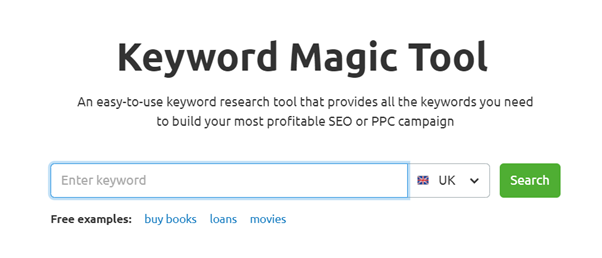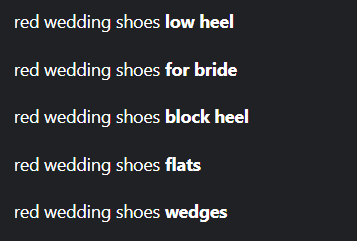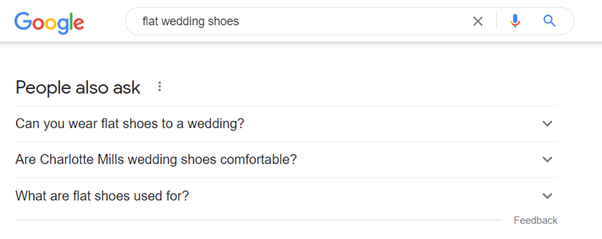Keyword research is a strategic process that has many variables and getting it right can make a huge difference to your website’s online visibility to potential customers using search engines, along with your wider SEO efforts. The keywords that you choose to target on your website have an impact on not only search engine results and the traffic landing on your pages, but also influence the content that your site needs to have and your plans for online business growth.
In order to implement the most effective keyword research strategy for your business, there are several different stages to go through to make sure that you have the right balance of keywords targeted on the right pages to meet your audience needs at various stages of the buyer journey. The way that you might go about keyword research for one type of business is likely to be different to others, and ecommerce SEO keyword research requires a specific kind of approach to help set your site up for success.
We’ve put together this guide to take you through a way of conducting ecommerce keyword research that we’ve found to be highly effective in bringing in the most relevant traffic, to the most relevant part of your website, when they’re closing in on making a purchase decision.
How do you do keyword research for ecommerce?
Keyword research for ecommerce is quite different from doing it for other kinds of business, as the primary goal of any ecommerce website is to turn visitors into customers and generate revenue in as direct a way as possible. We believe that the main keys to getting ecommerce keyword research right include:
- Understanding the buyer journey and how customers are using search engines at each stage: intent-led keywords
- Identifying keywords with a good balance of search volume and competitiveness
- Ensuring keywords are mapped to the right pages on your website
- Incorporating common questions into your ecommerce keyword research plan
We go into each of these processes in more detail below.
Understanding the buyer journey and how customers are using search engines at each stage: intent-led keywords
Having a good understanding of your customer’s buyer journey is essential if you want to set your ecommerce keyword research up to succeed from the beginning. Someone who is at the very start of their online research into a type of product will usually search for different things to someone who is ready to make a buying decision.
This is going to vary dramatically depending on what you sell and how considered a purchase it is likely to be. For example, a business selling high-end gaming laptops and a business selling cheap fashion tights are going to have very different online customer journeys, as one is a purchase that most people will spend some time researching, comparing and reading up on before committing, whereas the other could easily be an impulse buy made on the spot.
It’s not just about what you sell though, it’s also about what the customer needs from you, as a trusted retailer, at every stage of their journey towards committing to a purchase. What will they be searching for in order to find answers to their questions or the information they want to be sure of a purchase? The key to this is to look for ecommerce keywords with intent.
- Those at the top end of the funnel are more likely to search for general information on the topic, which are often (but not always) framed as questions, usually with modifiers like ‘how’, ‘what’, ‘why’, ‘guide’, ‘tips’ etc.
- Then they move on to having some commercial intent i.e. they have an intention to buy in the future but need more information first. These kinds of queries often have something comparative included, such as ‘best’, ‘top’, ‘compare’ or ‘review’.
- The next stage is often transactional intent, as users move closer towards a purchase decision. The searches they make are often based around modifiers related to price e.g. ‘cheap’ or ‘deals’ along with intentional searches including terms like ‘buy’.
- Another kind of search that could have a good chance of conversion potential are those which contain a brand name, product name, model number or certain specifications (e.g. with tech products) etc, as this shows this person is already near the bottom of the funnel and looking for actual products to buy rather than just early research information. This is known as navigational intent.
Ecommerce businesses shouldn’t ignore those at the top end of the funnel, as it’s still important to attract online visitors then so your brand can get on their radar. However, an ecommerce business will need to put more of a focus on those who are closer to buying, as this is what will bring a more direct return. The best ecommerce sites find a balance where they produce optimised content aimed at every stage of the buying journey for every major type of customer.
Identifying keywords with a good balance of search volume and competitiveness
Once you have an idea what kind of modifiers can indicate an intent that matches to your audience’s stage of the buying process, you can use a keyword tool (or preferably more than one) to find data on the search terms that are being used by people like your target market. The important data you want to look at is how many people in the country you operate in are searching for a term on a monthly basis, and also how competitive the term is (i.e. how many of your competitors are already targeting/ranking for this term).
A general rule of thumb is that the more generic search terms e.g. red shoes, will have high search volume and be quite tough to gain top rankings for. Whereas some long-tail keywords for ecommerce will definitely have fewer people searching for them regularly, but might be easier for your site to rank for and are likely to bring in more qualified traffic anyway e.g. red stiletto heels with straps.
While there are some free keyword research tools available, such as Google Keyword Planner and Ubersuggest, they do tend to give limited results and perhaps not the depth of data that you really need to make smart keyword decisions for your ecommerce site. We recommend a paid subscription tool, such as SEMRuth, Moz or Ahrefs, which will enable you to do a proper assessment of potential keywords for your business to target.
These tools will take the starting point you give them i.e. a type of product, and provide you with an expanded list of relevant terms that you can assess and choose from.

Ensuring keywords are mapped to the right pages on your website
When you have an ecommerce keywords list that is highly relevant to what you sell, you need to work out which specific pages of your website to target these keywords on. You don’t want to be targeting the same keywords on different pages, as this can result in keyword cannibalisation, where search engines can’t tell which pages to rank higher for those repeated terms and sometimes might even lower the rankings of all pages that target the same keywords.
You also don’t want to try and target too many keywords on a single page, as this can often end up with a page that looks spammy, which can also negatively impact search engine rankings as well as offer a poor experience to site visitors. Trying to keep the keywords being targeted at between 3-6 per page is usually appropriate, although you might want to add in some FAQs too, which we cover later in this article.
For many ecommerce brands, choosing which keywords to target on which page comes fairly naturally, especially for long-tail keywords. For example, if you sell bridal footwear, you might choose to categorise shoes by colour, as you know that’s how people search for them. Therefore, it’s fairly straightforward to map relevant keywords to a red shoes category page. If you don’t already have an existing dedicated category page for red shoes, you can create one as part of your wider SEO strategy, create content for it and populate it with a product feed.
Incorporating common questions into your ecommerce keyword research plan
While the focus for ecommerce brands is clearly on bringing people who are looking to buy products like yours to your website, there is value in bringing people in at all stages of the buyer journey for the reasons mentioned earlier. To help with this, it can be very beneficial to include commonly asked questions as part of your SEO keyword optimisation strategy. Keyword tools like SEMRush and Ahrefs can show you relevant questions in their interface. You can also do a simple Google search and look for ‘People also ask’ questions on the results page.
Often, these questions might be too generic to naturally sit on a category page, but sometimes you might find something that works and would add value to the users on that page. For example, our wedding footwear brand might find these questions:
The top question would be ideally suited to incorporate into the content of a category page for flat wedding shoes.
Those that don’t naturally fit onto a category page can instead be incorporated into blog content. As mentioned earlier, some of the most searched terms are those that start with question-based, how-to or guide-based content; topics which are ideally suited to blogs.
Where there are at least two questions being answered on the same page, you can use FAQpage schema to help search engines understand and highlight that content to relevant searchers. FAQpage schema is a type of structured data that is added to the code of a webpage. This can result in a rich snippet result in a search, such as in the example shown below, where the questions that appear below the site information have been marked up with structured data in this way.
Once you have your keyword strategy all mapped out, you can use a keyword ranking tool (such as the one provided by SEMRush) along with Google Search Console to benchmark performance and track SEO performance for those terms. This way, you can evaluate your keyword performance regularly and make changes to your strategy if required to optimise results, although it’s important to bear in mind that SEO doesn’t bring instant results and depending on how competitive the term is, along with the effectiveness of your other SEO activity, it can take several months for some rankings to start moving in the right direction.
You might also find it useful to take a look at this recent blog on improving your product page SEO.
If you’d like any more information on keyword research or SEO strategy, get in touch with us via the form below for a chat.











